Two astronauts kept ice cool as their rocket traveling at thousands of miles an hour malfunctioned on the edge of space while carrying them to the International Space Station, cockpit audio reveals.
Russian Aleksey Ovchinin and American Nick Hague made it back to Earth alive this morning after the booster on their Soyuz rocket broke at 164,000 feet and the rocket automatically turned back during a dramatic 7G ‘ballistic re-entry’.
Ovchinin retained an enviable sang-froid as he realized what was happening after they were rocked violently around in their seats by the force of the booster malfunction.
‘An accident with the booster, 2 minutes, 45 seconds. That was a quick flight,’ he said in a calm voice in a streaming video of the incident.
‘We’re tightening our seatbelts,’ Ovchinin said on the video.
At that moment the two astronauts were experiencing weightlessness when in an ordinary launch they should still have been pinned to the back of their seats by the force of the rocket surging upwards at 4,970mph.
Russia says it has opened a criminal investigation and grounded all Soyuz flights. The accident comes weeks after a hole was discovered in the International Space Station amid talk from the Russian space authorities of deliberate sabotage.
Video footage from the launch at the Baikonur Cosmodrome shows a large plume of smoke coming from the rocket at the moment it failed and footage from inside the capsule shows the two astronauts being violently shaken about.
The accident bears similarities to the 1986 Challenger disaster when one of its boosters failed at lift-off causing an explosion that killed seven.
Astronauts have been involved in Soyuz malfunctions twice before, one in 1983 when a crew was forced to eject from a Soyuz rocket as it exploded on the launchpad. In 1975 a Soyuz capsule crashed back to Earth from 90 miles up after a rocket failure, but the crew survived.
The rocket, which was designed in the 1960s, has also had one booster fail in a similar fashion to today’s malfunction. In 2002 a booster rocket malfunctioned and the rocket which was carrying a satellite crashed in Kazakhstan killing one person on the ground.
In total Soyuz rockets have been launched 745 times of which 21 have failed. Thirteen of those failures have been since 2010, calling into question the continued reliability of the rocket.
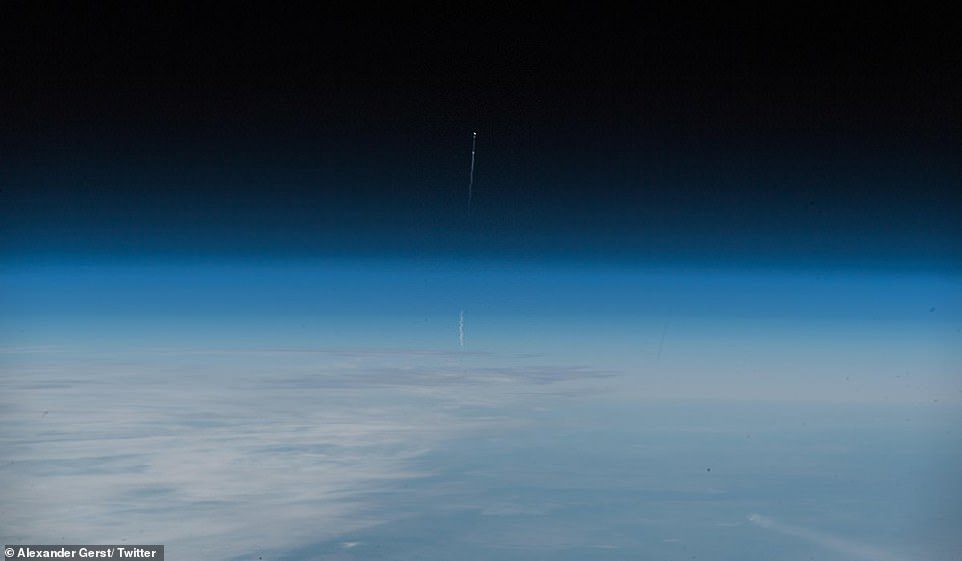
A photo taken from the International Space Station by astronaut Alexander Gerst who is currently working there shows the flight path of the aborted Soyuz spacecraft as it soared into the atmosphere and almost entered the Earth’s orbit before eventually plummeting back to earth because of the technical malfunction in its booster. Gerst said: ‘Glad our friends are fine. Thanks to the rescue force of 1000 SAR professionals! Today is again showing what an amazing vehicle the #Soyuz is. Spaceflight is hard. And we must keep trying for the benefit of humankind’
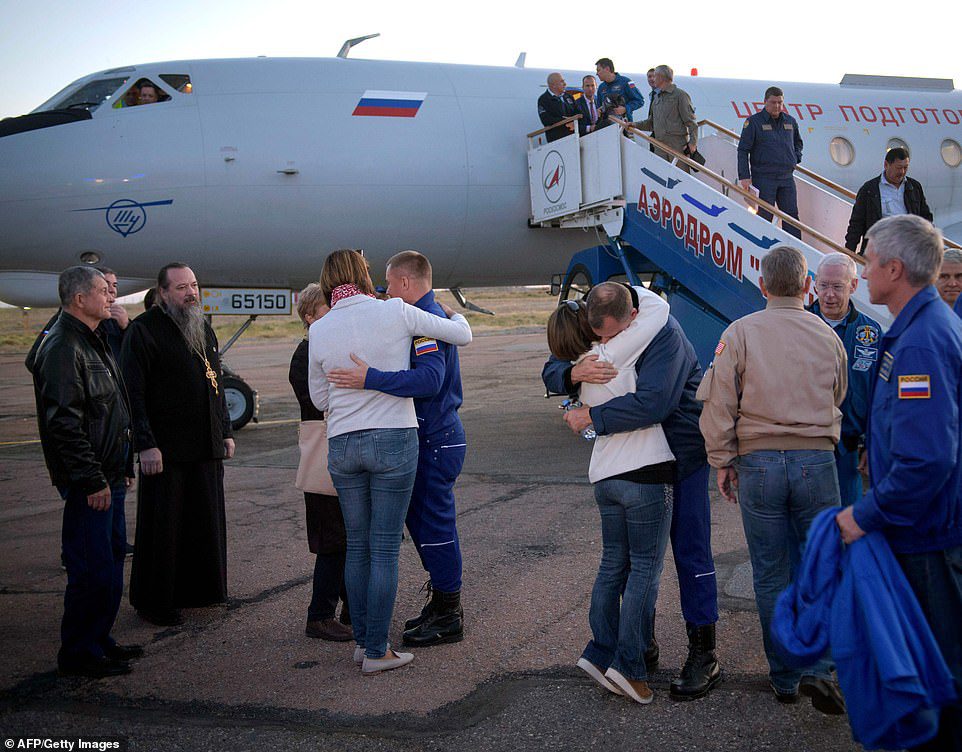
Alexey Ovchinin (center left) of Roscosmos, and Flight Engineer Nick Hague (center right) of NASA, embrace their families after landing at the Krayniy Airport in Baikonur, Kazakhstan after their aborted mission
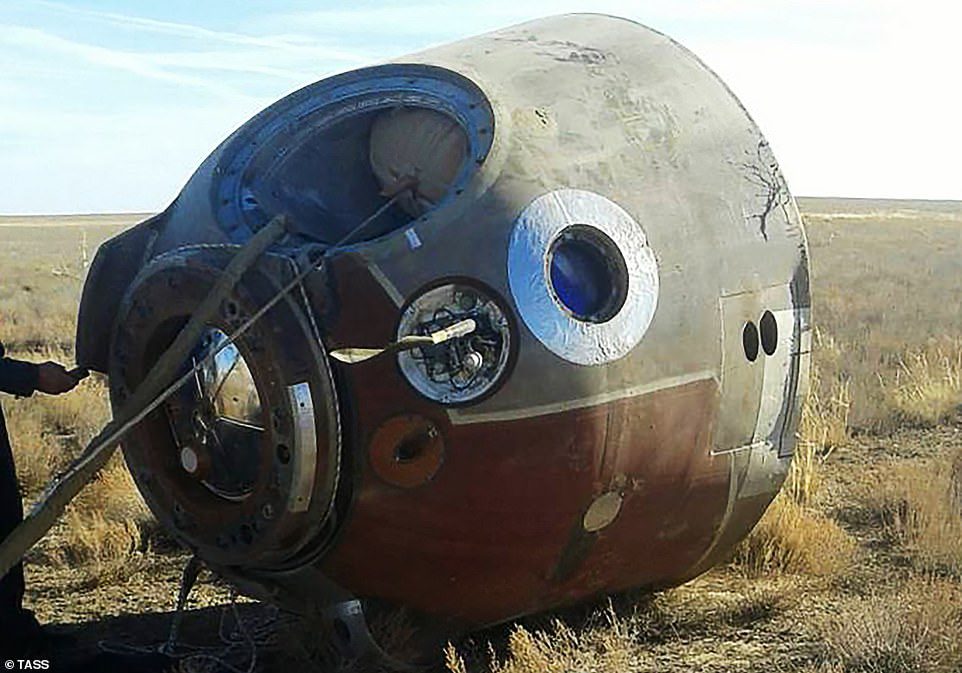
A view of the Soyuz MS-10 space capsule crash-landed on the Kazakh steppe on Thursday. Rescuers who rushed to the aid of the two stranded astronauts took the revealing photo showing the stricken capsule lying on its side after the aborted mission to the International Space Station
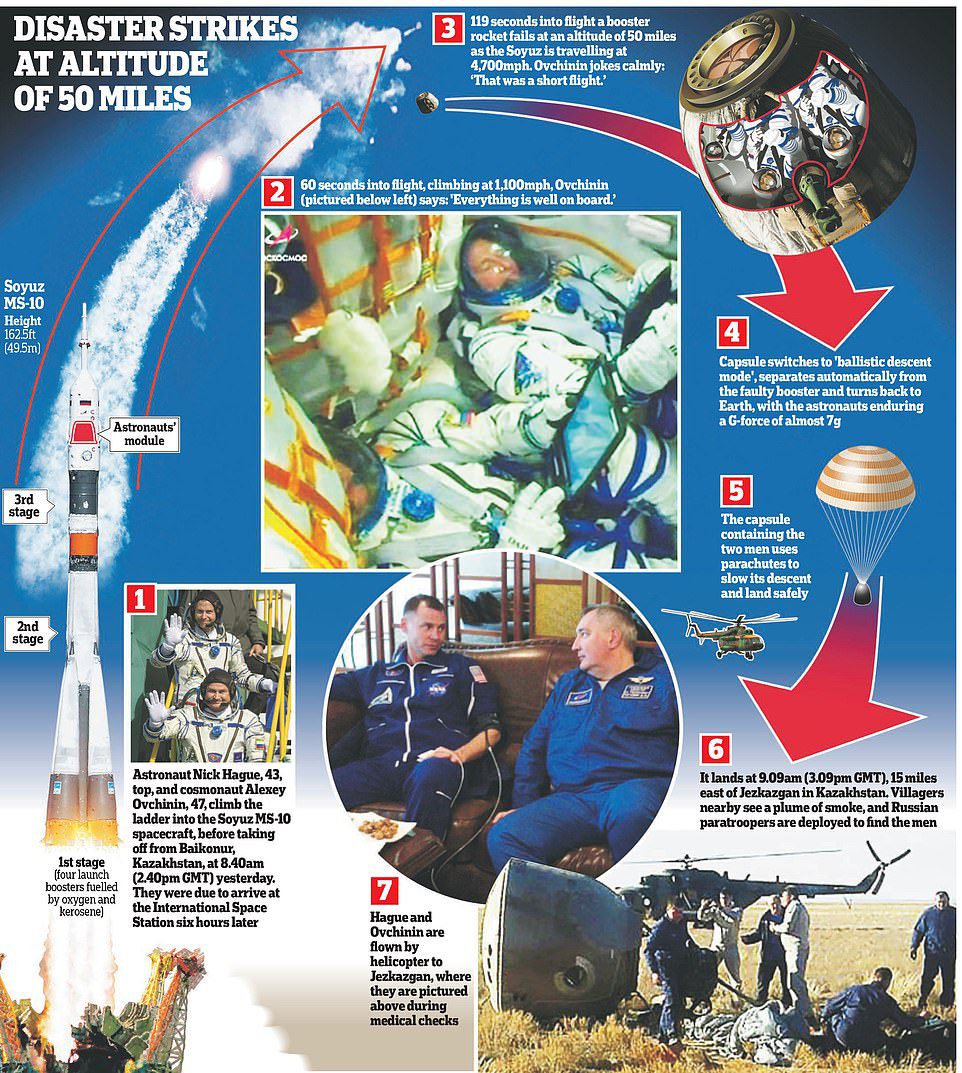
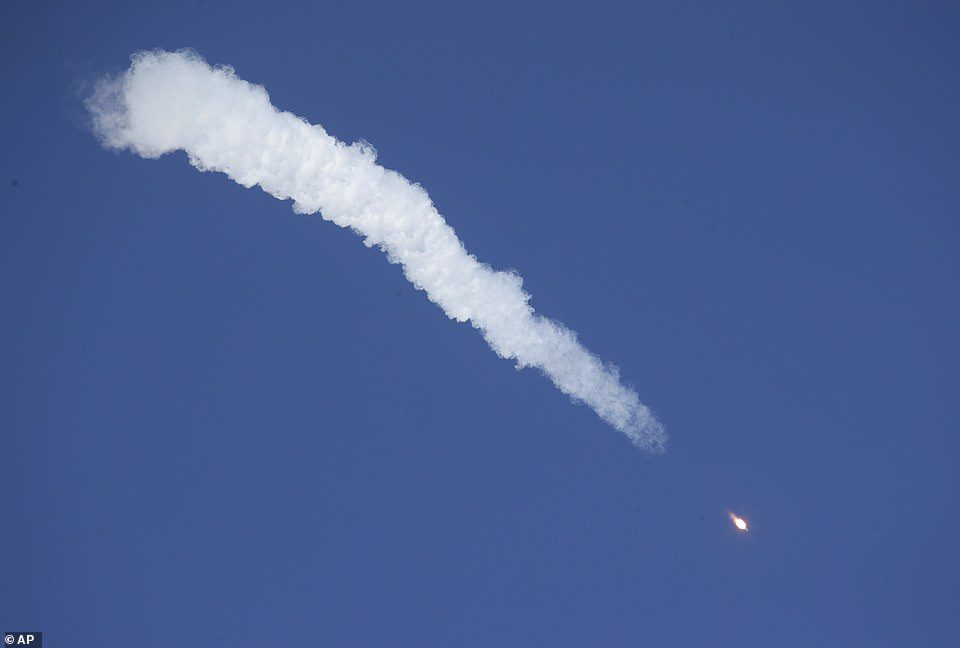
The Soyuz-FG rocket booster with Soyuz MS-10 spaceship during the troubled ascent on Thursday from a launch station in remote Kazakhstan. The mission was a collaboration between NASA and Russia’s national space agency Roscosmos and was aimed at replenishing manpower aboard the International Space Station
Search and rescue teams were scrambled to the touchdown location as NASA revealed the descent meant the Russian-built Soyuz MS-10 spacecraft had to take ‘a sharper angle of landing compared to normal’.
The Russians have suspended Soyuz flights to the space station while they investigate the cause of the booster failure.
The Soyuz is the only way to get people to the space station at the moment but officials insist the astronauts currently on the space station have enough supplies.
NASA rookie Nick Hague and second-time flyer Aleksey Ovchinin of the Russian space agency were setting off for a six-month mission at the International Space Station Thursday, on a relatively rare two-man launch.
A spokesperson for NASA said that rescue teams have now reached Hague and Ovchinin and they’ve been taken out of the capsule and were in ‘good condition’.
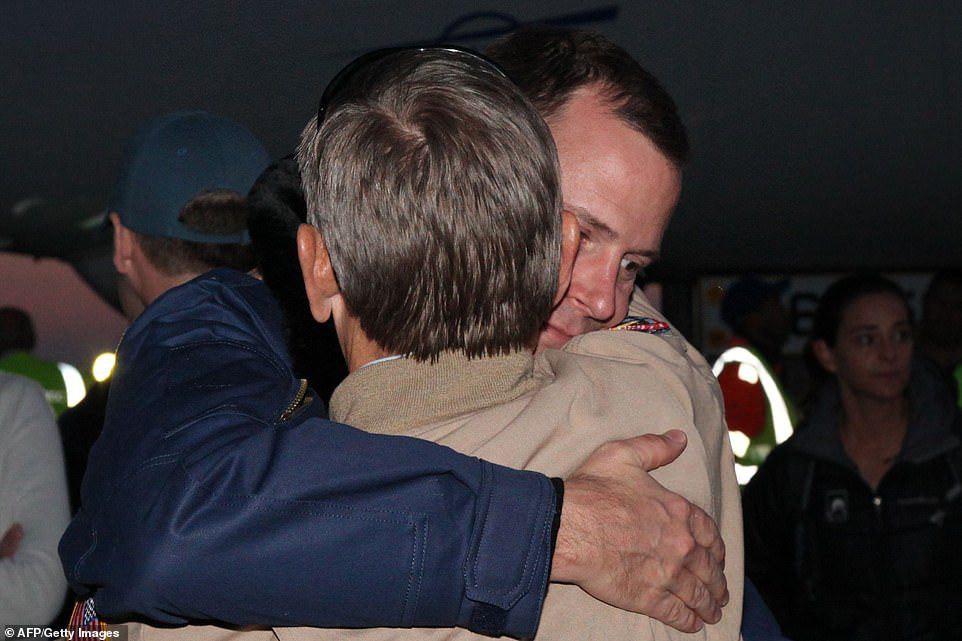
Astronaut Nick Hague was greeted upon his return by family members and officials after today’s botched launch
The craft’s landing engines and parachute system were said to have done their job as normal despite the enormous G-force acting on both the shuttle and crew during the landing.
Shortly after the incident rescue crews and paratroopers were rushed the emergency landing site in the barren Kazakh steppe to provide support for the crew.
NASA had issued a worrying tweet on Thursday morning saying: ‘There’s been an issue with the booster from today’s launch. Teams have been in contact with the crew.’
‘The capsule is returning via a ballistic descent, which is a sharper angle of landing compared to normal. Search and rescue teams are heading towards the expected touchdown location of the spacecraft and crew.’
Cosmonaut Alexander Volkov commented: ‘The guys are lucky that they remained alive. They had reached a good height so it was possible to descend in their capsule.’
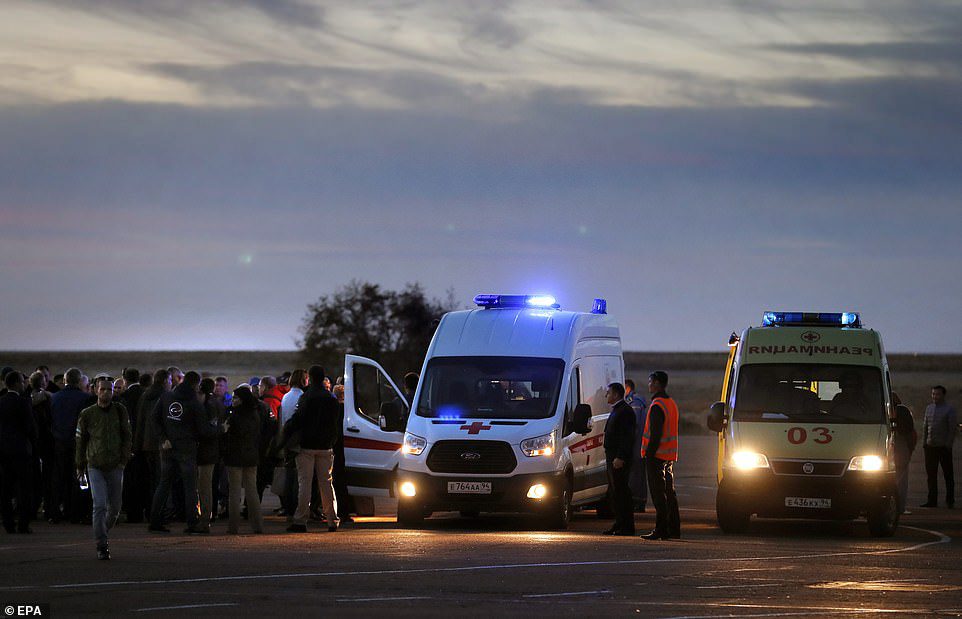
The pair were forced to return back to earth following a problem with their booster rocket
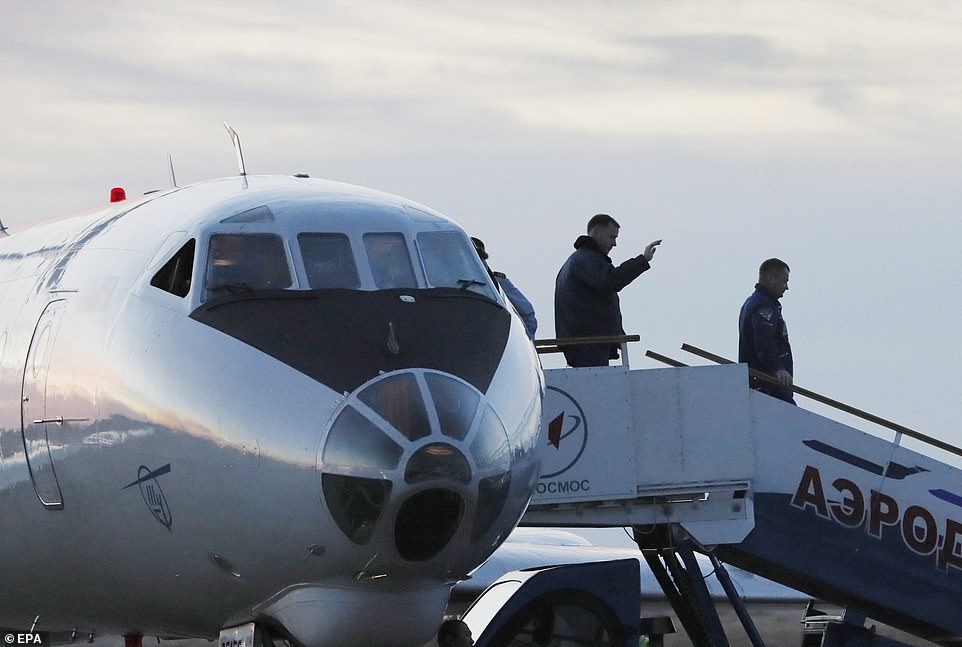
US astronaut Nick Hague left, and Russian cosmonaut Alexey Ovchinin, right, arrived at the Baikonur airport in Kazakhstan just hours after their narrow escape
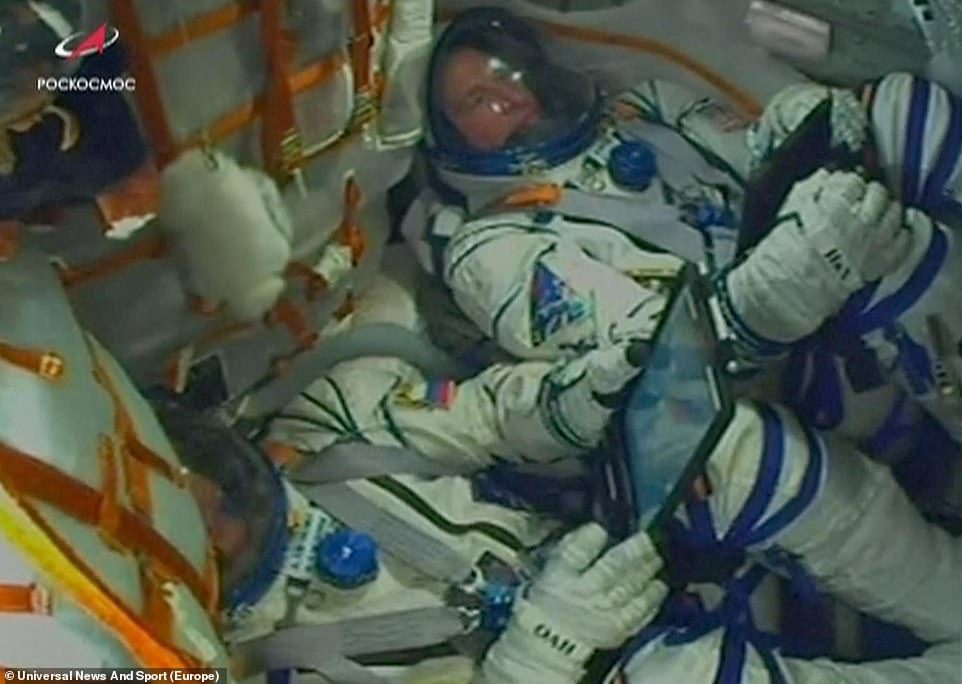
The two-man crew of NASA rookie Nick Hague and second-time flyer Aleksey Ovchinin in the cockpit of the spacecraft during take-off. Hague had never been aboard a space shuttle before Thursday’s launch, with Ovchinin only having been into space once during a previous six-month posting to the International Space Station
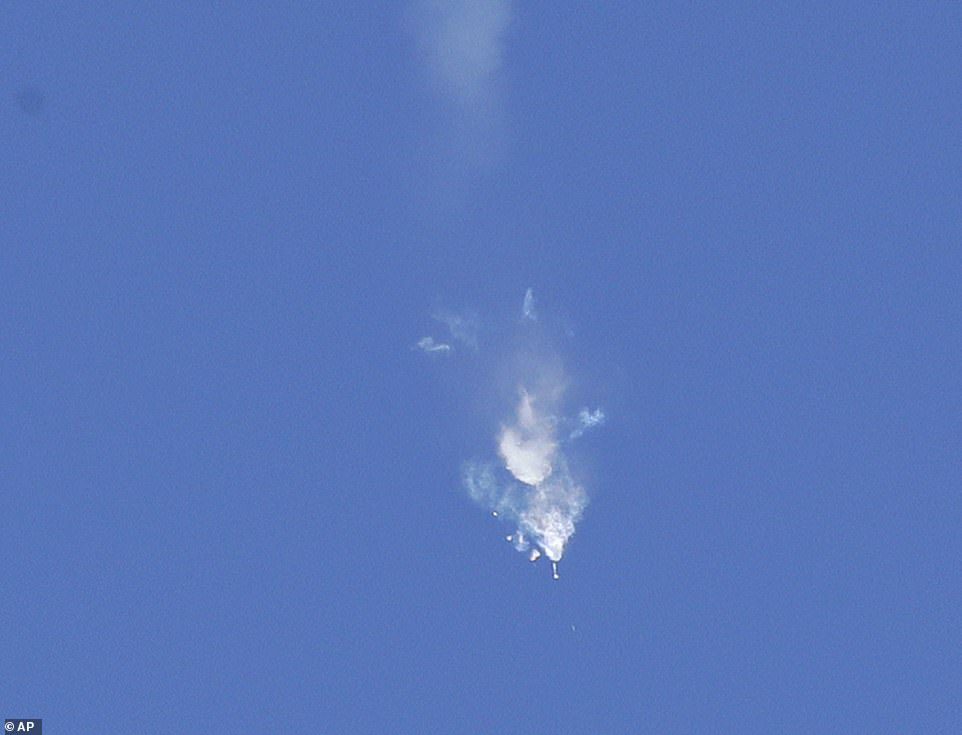
A massive plume of smoke could be seen firing out from behind the boosters in the dramatic moment the shuttle’s engine failed during the launch phase. The astronauts on board were forced to make a dramatic emergency landing after the mid-air catastrophe occurred just three minutes into their six-month mission
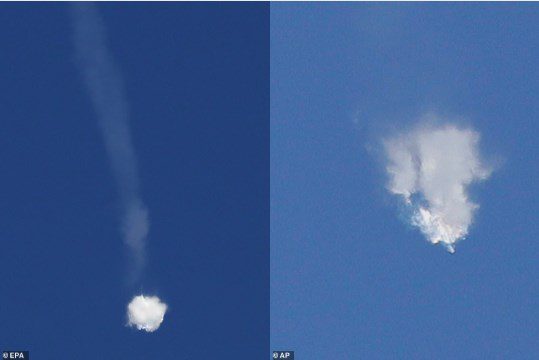
Smoke pouring out of the engines of the Soyuz rocket during the first stage of its launch on Thursday afternoon after the engine malfunctioned. NASA officials later confirmed that the second-stage boosters had failed after all four of the initial boosters had been jettisoned
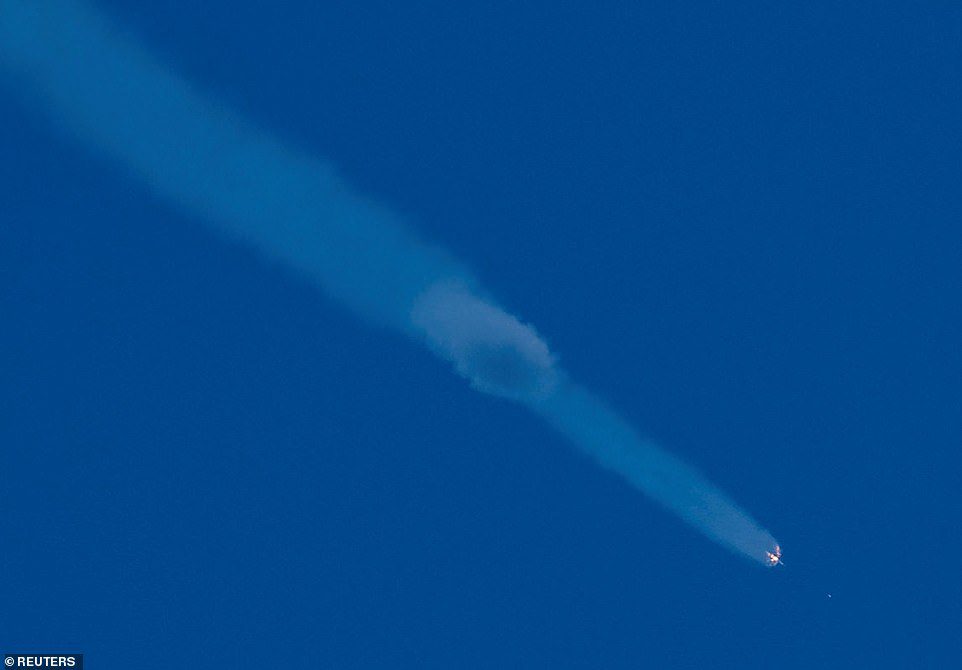
A large cloud of dark-colored smoke could be seen gathered in the wake of the spacecraft as it soared through the upper atmosphere. The dramatic episode took place approximately 164,000ft above the Earth but before the craft and its crew entered the Earth’s orbit
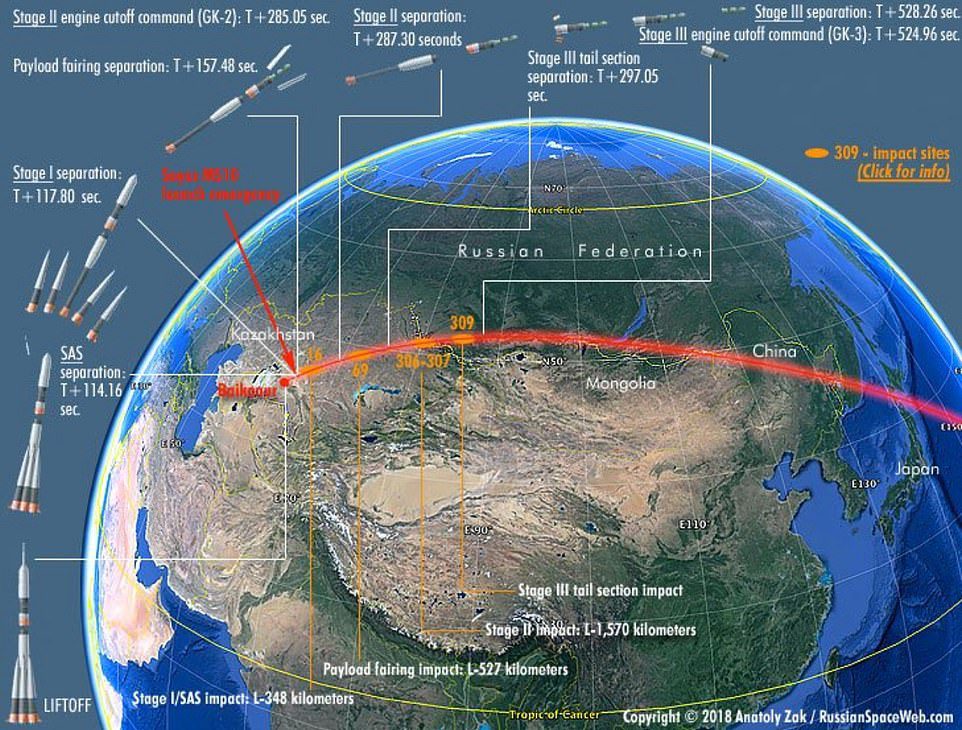
The Soyuz spacecraft had just finished phase one of its launch processes and was preparing to enter stage two when its boosters failed. Roscosmos announced they would launch a full-scale investigation into the cause of the incident just hours after the failed flight took place on Thursday afternoon
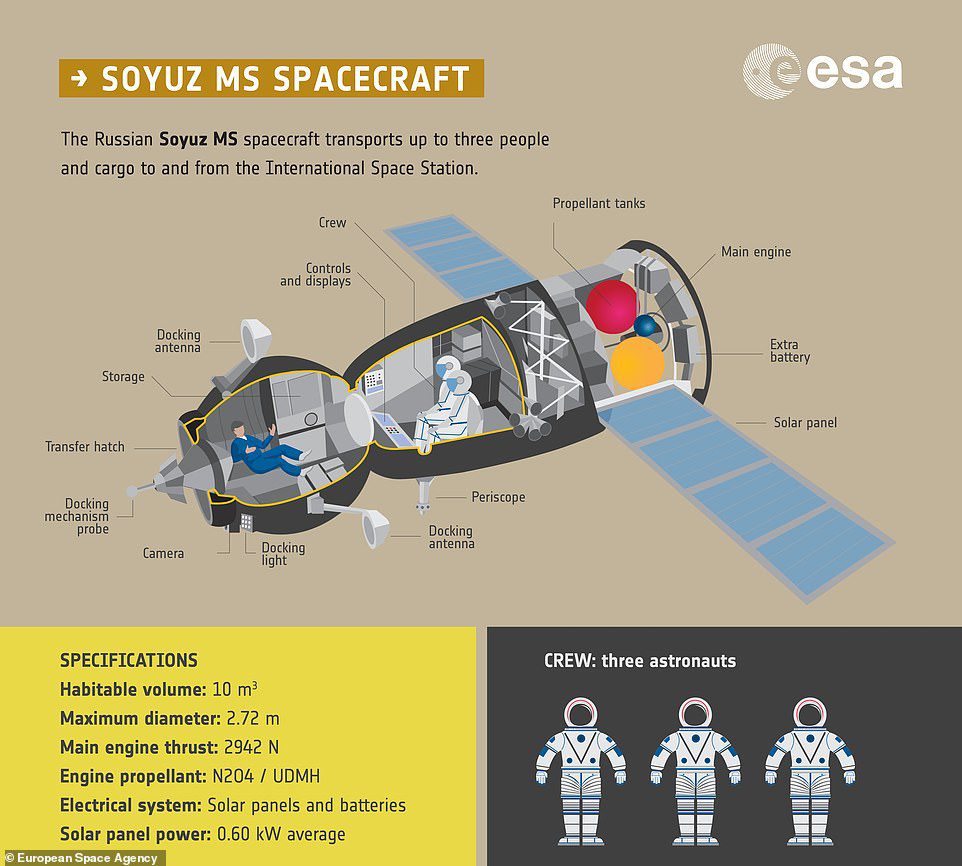
The Soyuz spacecraft is based on the design of a 1960s model which hasn’t changed much since it was initially introduced in the era of the Soviet Union
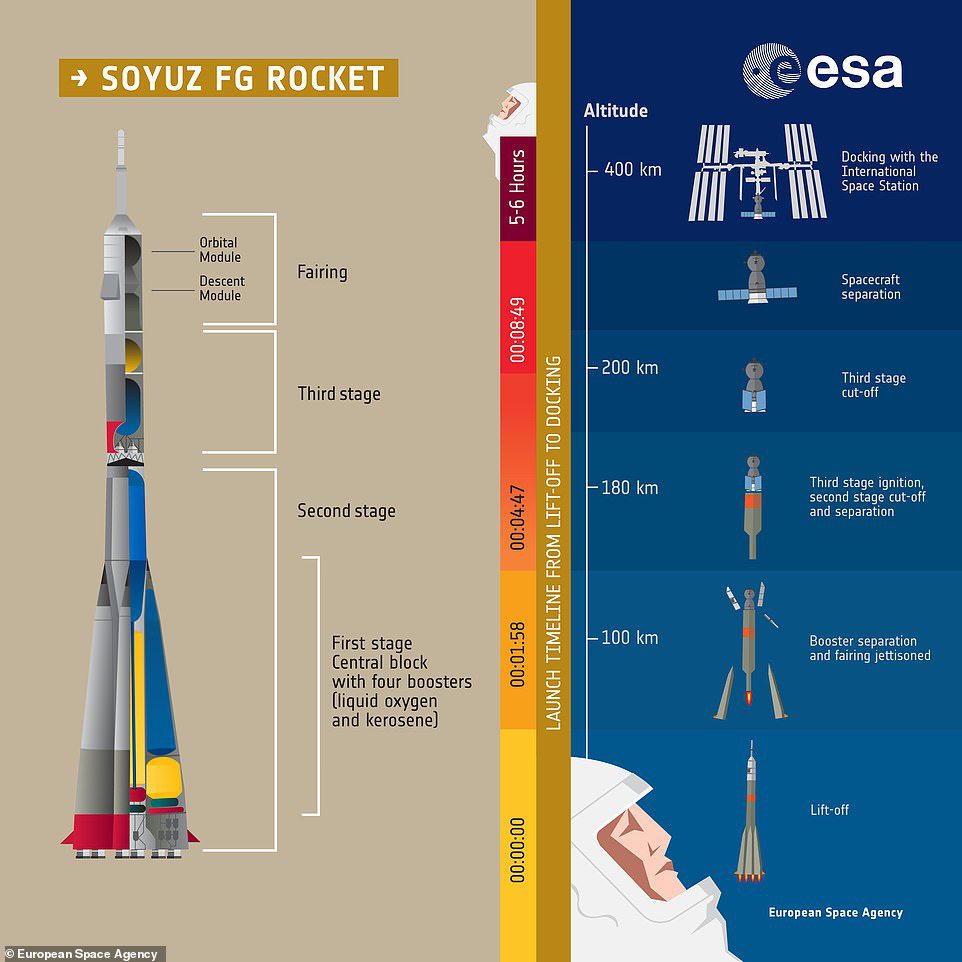
This graphic shows how the Soyuz-FG rocket booster propels the Soyuz MS-10 spaceship, delivering astronauts into space. The booster suffered an emergency shutdown during the second stage of its launch procedure as the pilots were preparing to go into orbit
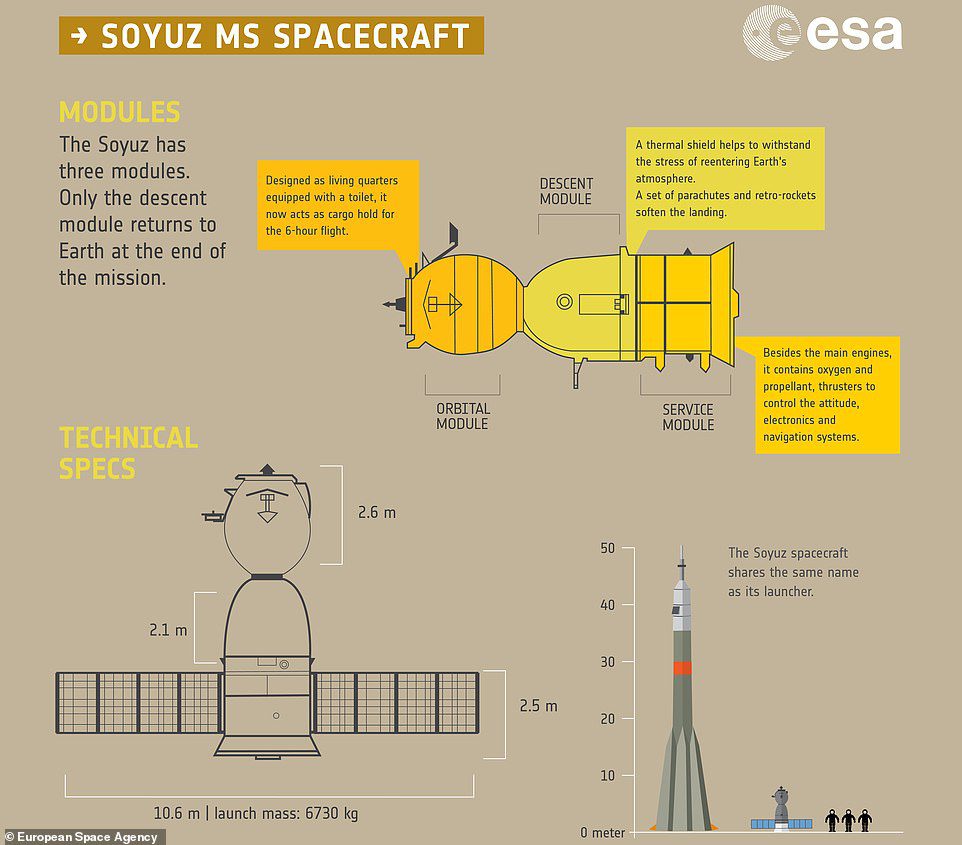
The Soyuz has three separate modules: An orbital module, a descent module, and a service module. Only the descent module returns to Earth
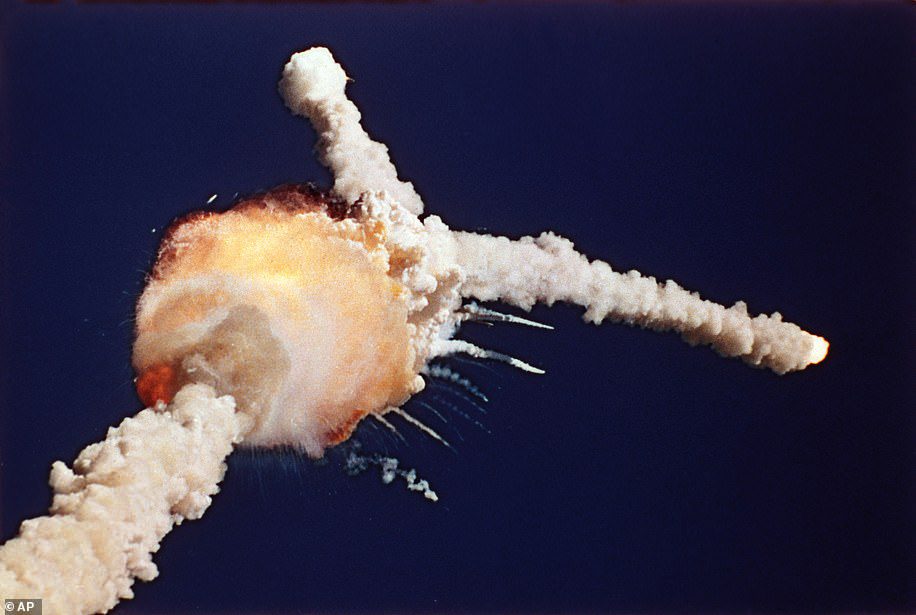
The Space Shuttle Challenger explodes shortly after lifting off from Kennedy Space Center, Florida on January 28 1986. The disaster remains to this day one of the deadliest in the history of space exploration
Roscosmos, the Russian national space agency, and NASA said the three-stage Soyuz booster suffered an emergency shutdown during its second stage.
‘Thank God, the crew is alive,’ Russian President Vladimir Putin’s spokesman Dmitry Peskov told reporters when it became clear that the crew had landed safely.
The Soyuz rocket was due to dock at the orbiting outpost of the International Space Station six hours later, but the booster suffered a failure minutes after the launch.
NASA and Russian Roscosmos space agency said the astronauts were in good condition after their capsule landed about 20 kilometers (12 miles) east of the city of Dzhezkazgan in Kazakhstan.
Former military pilots Ovchinin and Hague were set to join Alexander Gerst of the European Space Agency, NASA’s Serena Aunon-Chancellor and Sergey Prokopyev of Roscosmos following a six-hour flight.
The International Space Station – a rare point of cooperation between Moscow and Washington – has been orbiting the Earth at roughly 28,000 kilometers per hour since 1998 and will mark its 20th birthday in November.
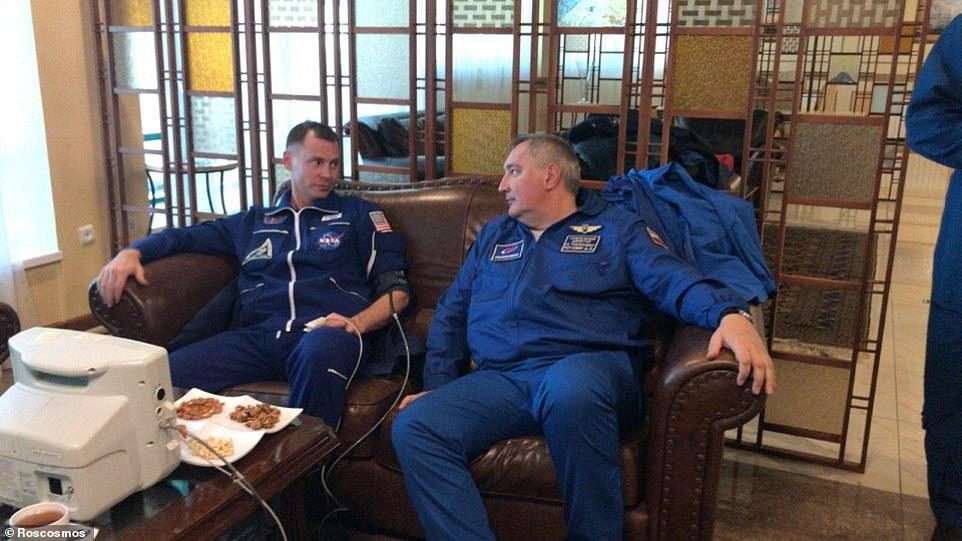
Roskosmos cosmonaut Alexey Ovchinin and astronaut Nick Haig pictured in the immediate aftermath of the terrifying incident. The pair are now in Zhezkazgan Kazakhstan and are being examined for any injuries or medical conditions arising from the ‘ballistic descent’
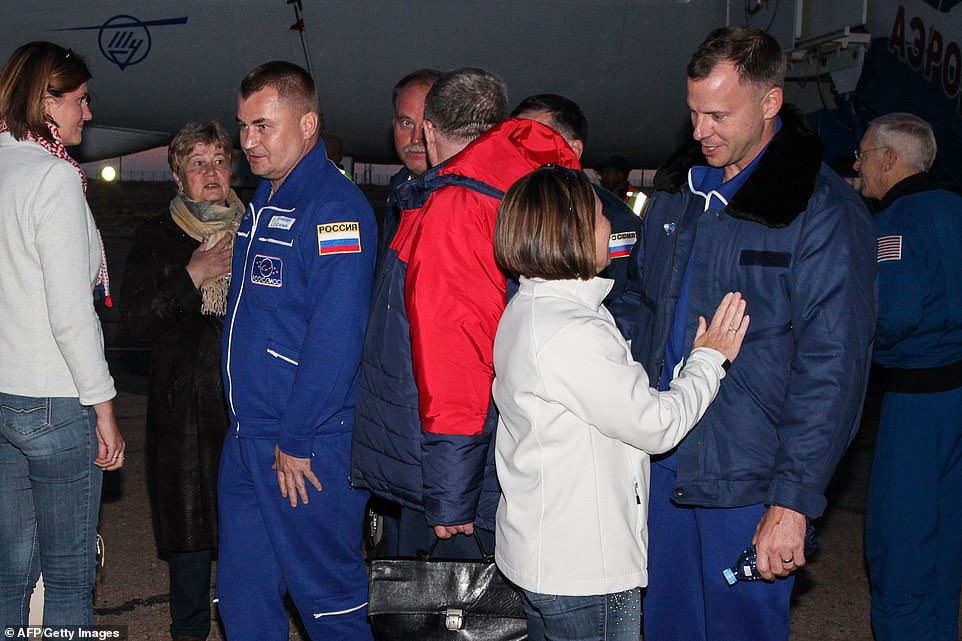
The two men were reunited with their families after landing at the Krayniy Airport in Baikonur, Kazakhstan later on Thursday
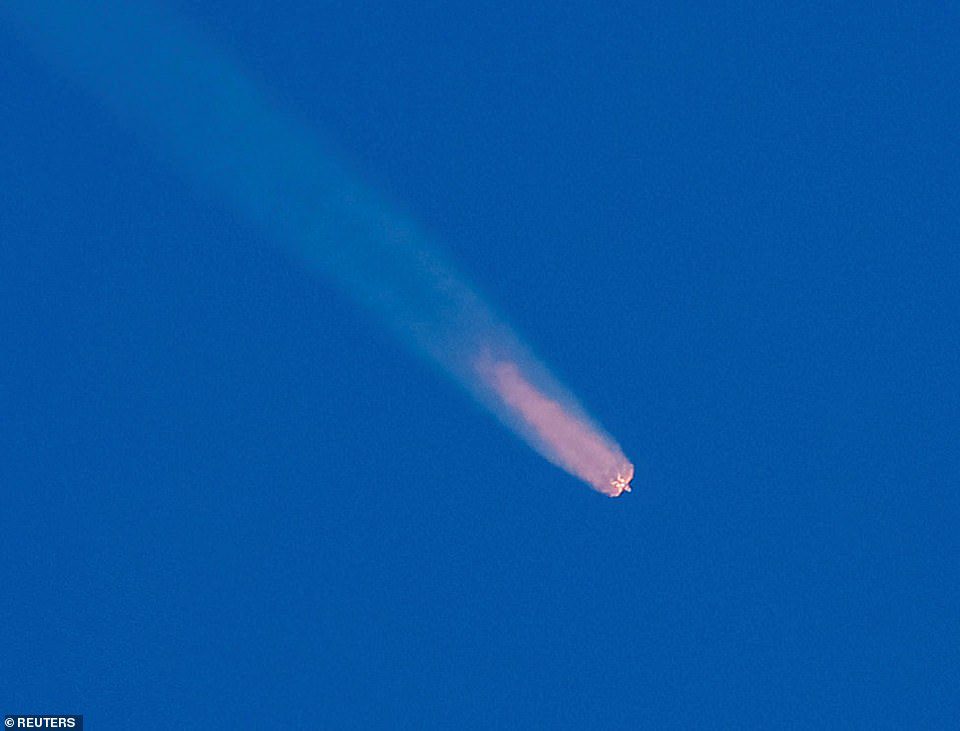
The astronauts were forced to carry out a dramatic ‘ballistic descent’ in which they experienced G-forces of up to 7G at times. NASA said the emergency landing subjected the two astronauts to forces much greater than under normal circumstances as they hurtled back towards Earth
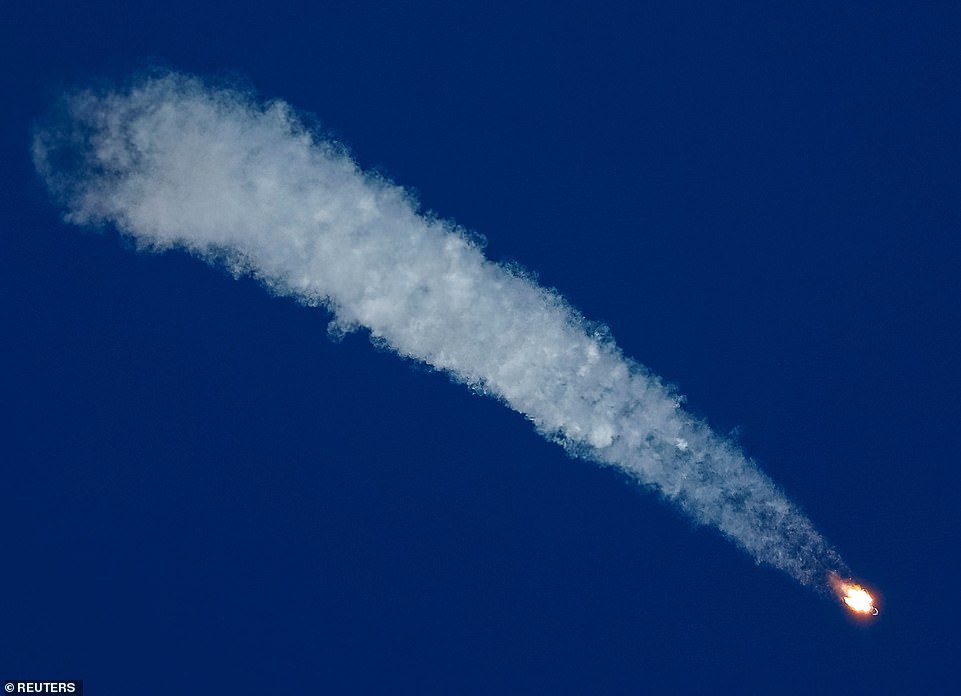
The craft’s landing engines and parachute system were said to have done their job as normal despite the enormous G-force acting on both the shuttle and crew during the landing. According to NASA and Roscosmos, the spacecraft was unable to use its second-phase boosters after the initial separation
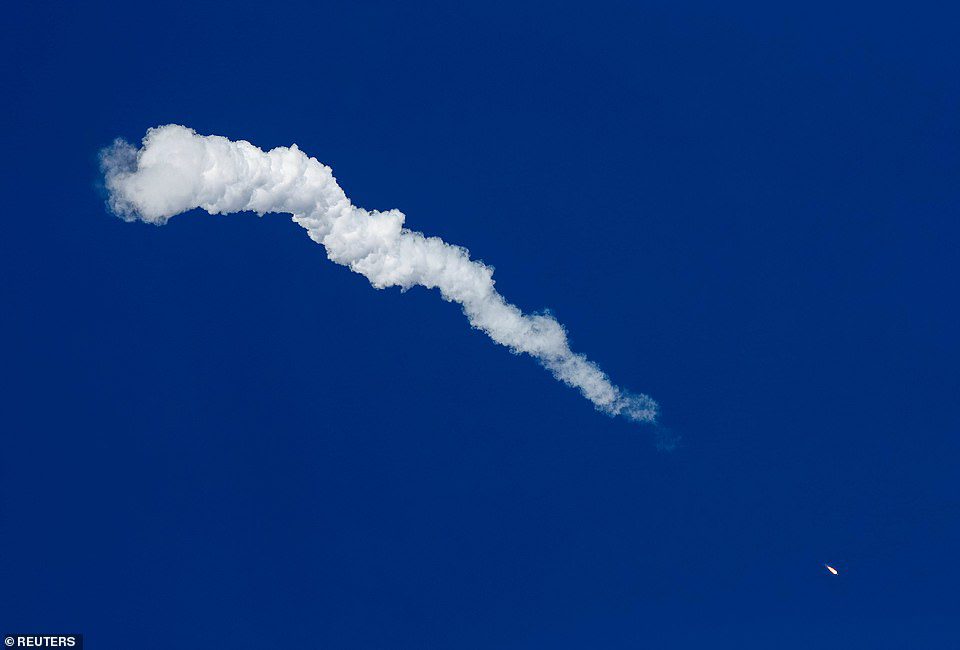
The spacecraft was said to have been traveling at 4,970mph as the boosters malfunctioned while carrying the two men into orbit. The Soyuz design was initially formulated in the 1960s and has formed the template for all future incarnations of the shuttle which has taken dozens of astronauts into space
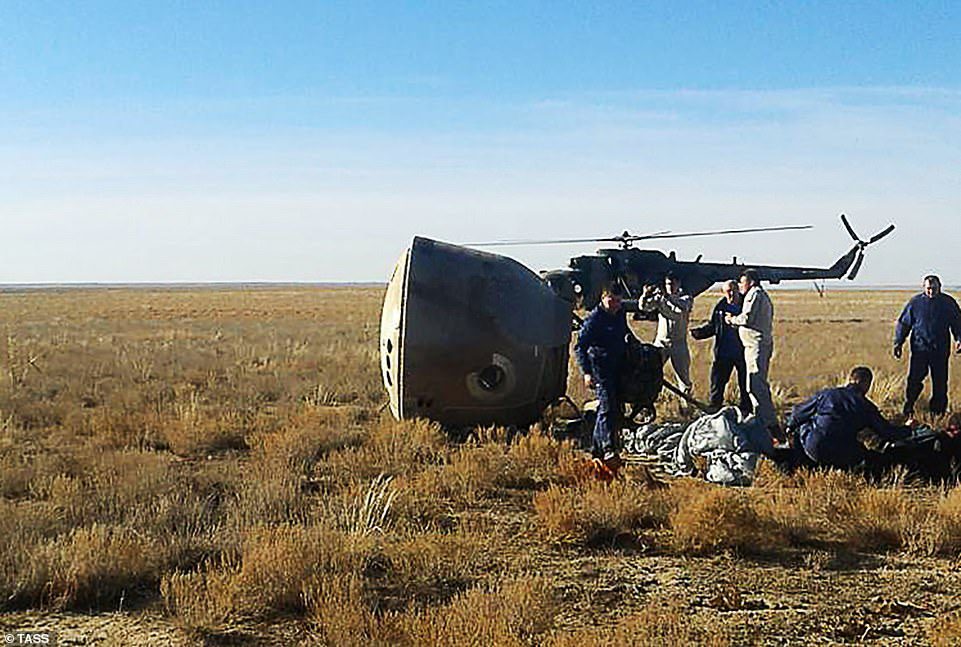
Rescuers pack up the parachute gear attached to the Soyuz MS-10 space capsule. According to NASA the emergency landing devices and parachutes worked perfectly and neither of the two men on board the capsule were said to have been injured after the incident
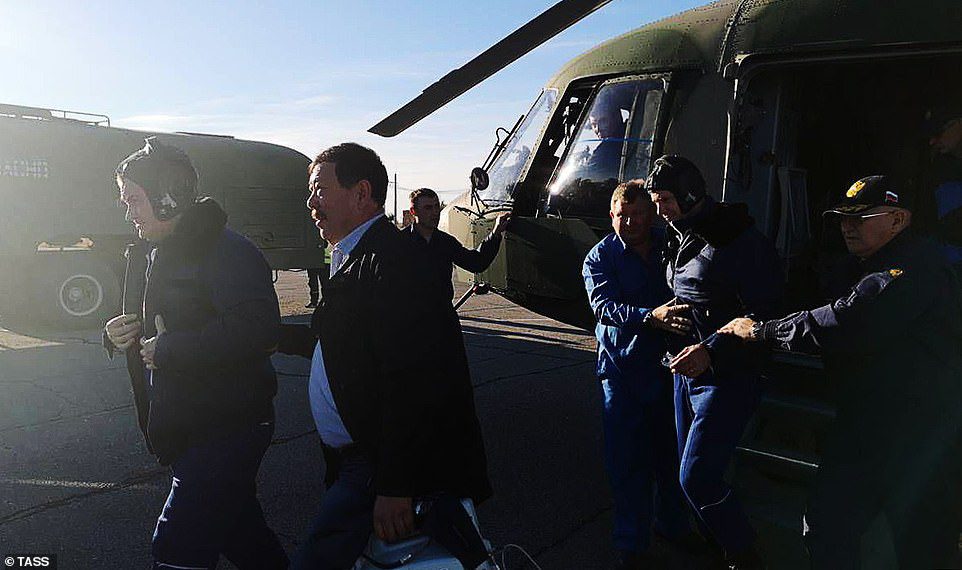
Roscosmos cosmonaut Alexei Ovchinin (left) and NASA astronaut Nick Hague (second right) of the ISS Expedition 57/58 prime crew are escorted out of a military helicopter after being rescued in the barren Kazakh Steppe following their disaster launch on Thursday afternoon
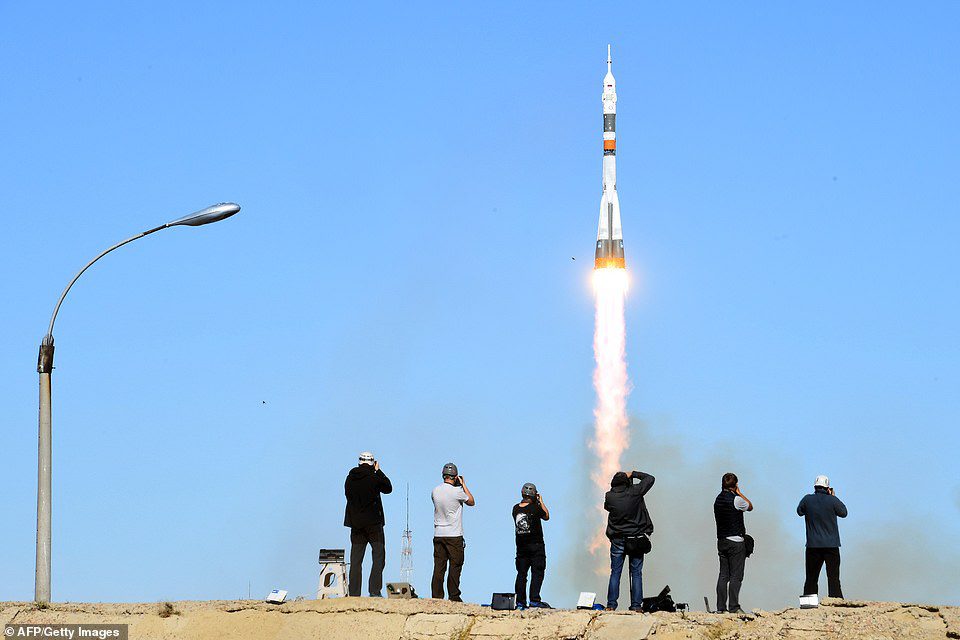
Photographers take pictures as Russia’s Soyuz MS-10 spacecraft jets into the sky during its launch in Kazakhstan on Thursday. The world’s media had gathered for the launch at the Baikonur Cosmodrome to herald the beginning of a joint project between the Russian and American space agencies
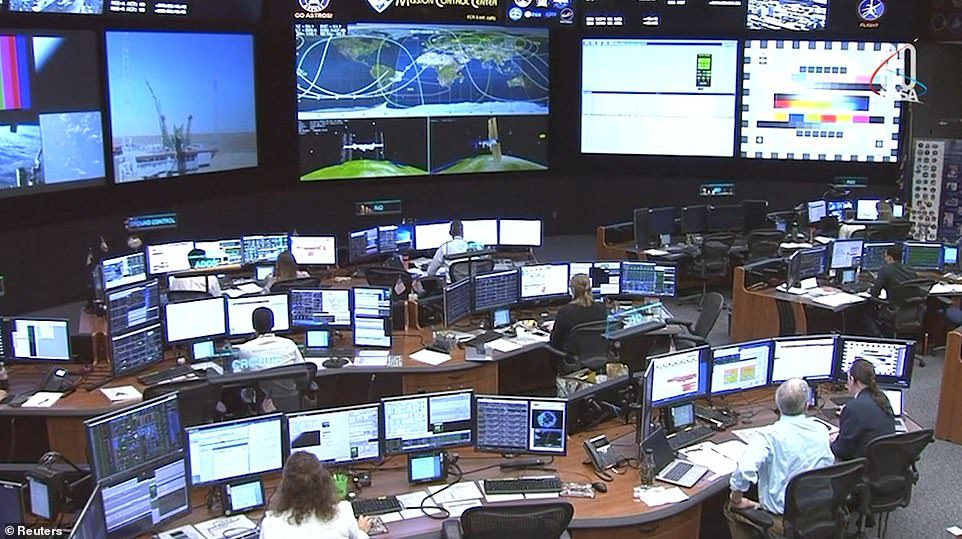
NASA released a statement during the launch saying that the crew would be forced to attempt a ‘ballistic re-entry’ to get back to Earth safely. NASA Administrator Jim Bridenstine said in a statement that Hague and Ovchinin are currently in good condition and will be transported to the Gagarin Cosmonaut Training Center in Star City outside Moscow
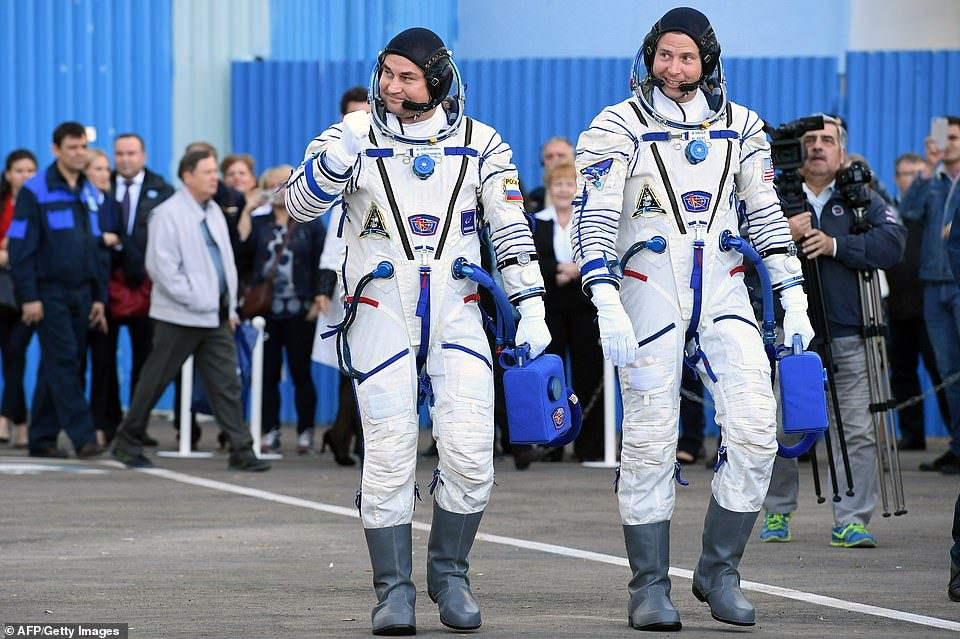
NASA astronaut Nick Hague (right) and Roscosmos cosmonaut Alexey Ovchinin walk toward the shuttle after their space suits were tested prior to the launch on Thursday. The astronauts were due to dock at the International Space Station six hours after the launch, but the three-stage Soyuz booster suffered an unspecified failure of its second stage
Over the past few years, the Russian space industry has suffered a series of problems including the loss of a number of satellites and other spacecraft.
Russia has continued to rely on Soviet-designed booster rockets for launching commercial satellites, as well as crews and cargo to the International Space Station.
Glitches found in Russia’s Proton and Soyuz rockets in 2016 were traced to manufacturing flaws at the plant in Voronezh. Roscosmos sent more than 70 rocket engines back to production lines to replace faulty components, a move that resulted in a yearlong break in Proton launches and badly dented Russia’s niche in the global market for commercial satellite launches.
In 2002, a Soyuz ship carrying a satellite crashed during launch in Russia when a booster suffered an engine malfunction, killing one engineer on the ground.
Only last month a hole was discovered in the International Space Station which Roscosmos claimed was drilled deliberately.
Roscosmos chief Dmitry Rogozin raised wide consternation by saying that the leak was a drill hole that was made intentionally during manufacturing or in orbit. He didn’t say if he suspected any of the current crew of three Americans, two Russians and a German aboard the station.
Roscosmos chief Dmitry Rogozin, who watched the launch together with NASA Administrator Jim Bridenstine, tweeted that a panel has been set up to investigate the cause of the booster failure.
Thursday’s failure was the first manned launch failure for the Russian space program since September 1983 when a Soyuz exploded on the launch pad.
Russian Deputy Prime Minister Yuri Borisov said all manned launches will be suspended pending an investigation into the cause of the failure. He added that Russia will fully share all relevant information with the U.S.
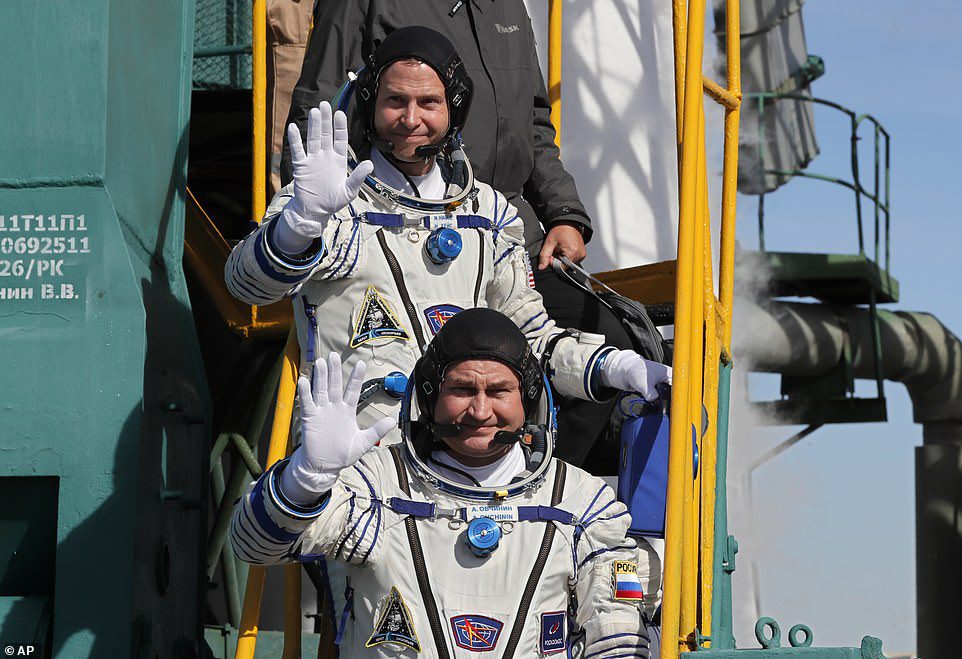
The pair had been due to dock at the International Space Station six hours after the launch but an issue just three minutes in prevented them from continuing. Thursday’s failure was the first manned launch failure for the Russian space programme since September 1983 when a Soyuz exploded on the launch pad
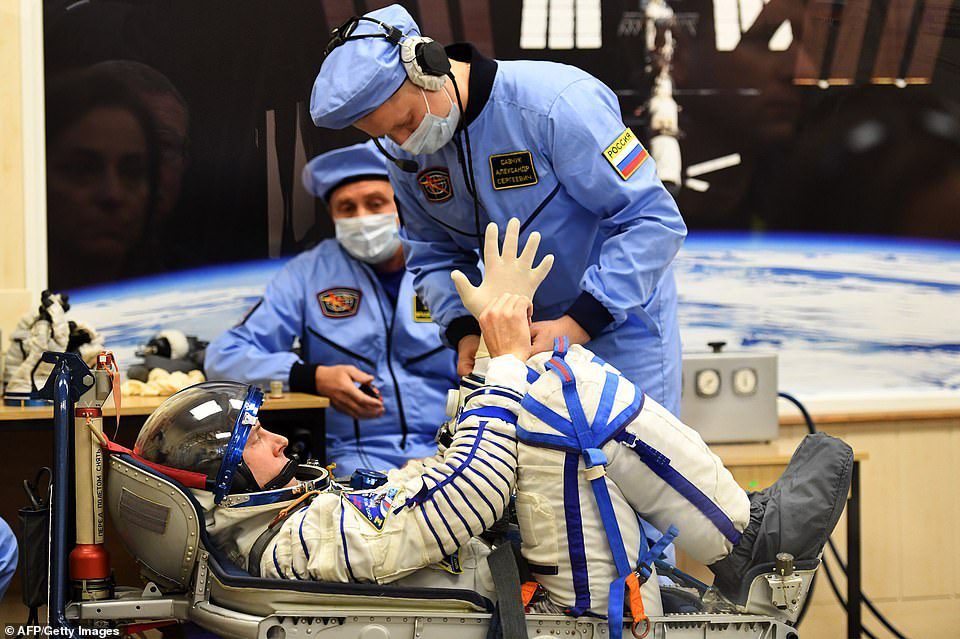
NASA astronaut Nick Hague testing his space suit with the help of NASA and Roscosmos technicians prior to the launch sequence on Thursday. Both Hague and Ovchinin were inexperienced astronauts having graduated to their respective countries’ space academies from careers in the US and Russian air forces
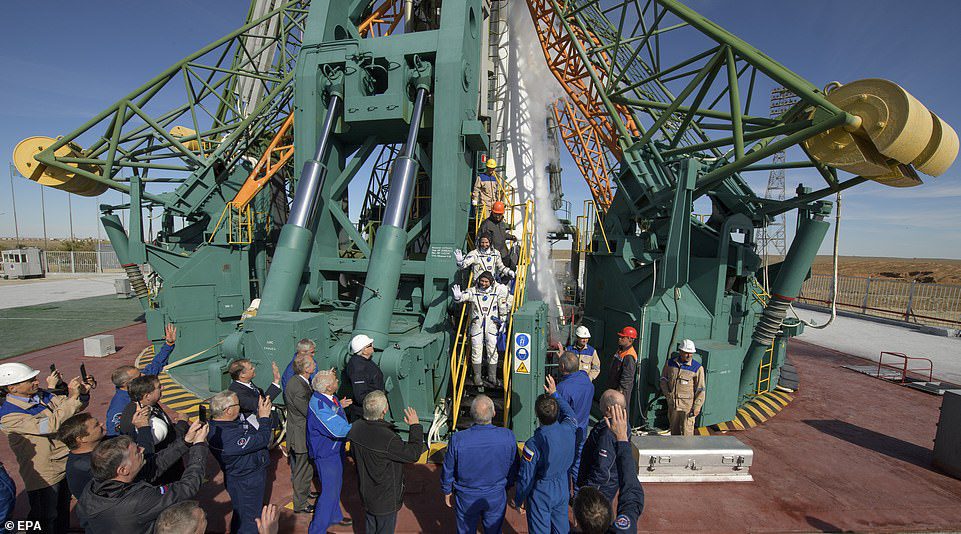
The two astronauts had been intended to carry out a six-month mission to the International Space Station which was discovered to be damaged last month. Russia claimed a hole had been drilled in the station promoting a dangerous drop in pressure which could have killed the astronauts on board
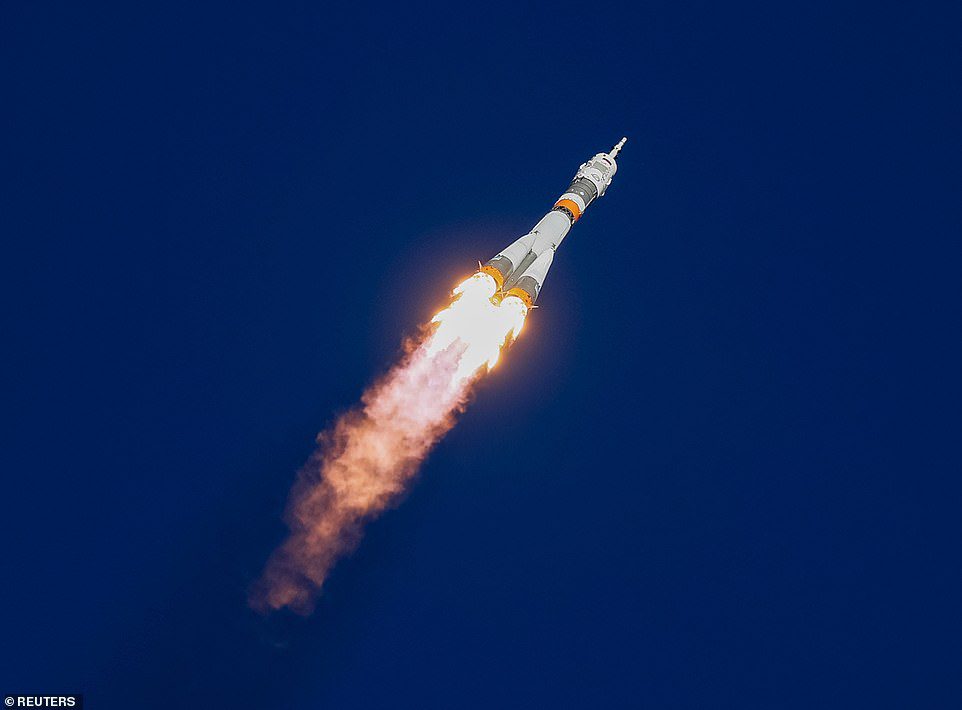
Shortly after the disaster, the emergency procedures were automatically triggered on board the shuttle which pointed the capsule back towards Earth and began the process of landing. Russia has continued to rely on Soviet-designed booster rockets for launching commercial satellites, as well as crews and cargo to the International Space Station
If you know someone who might like this, please click “Share”!
